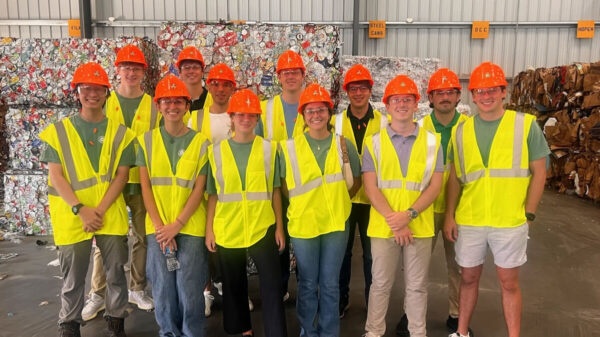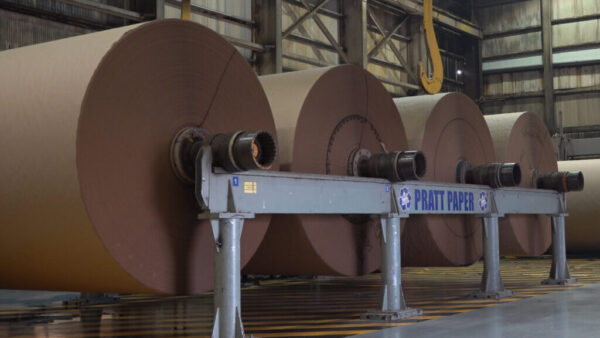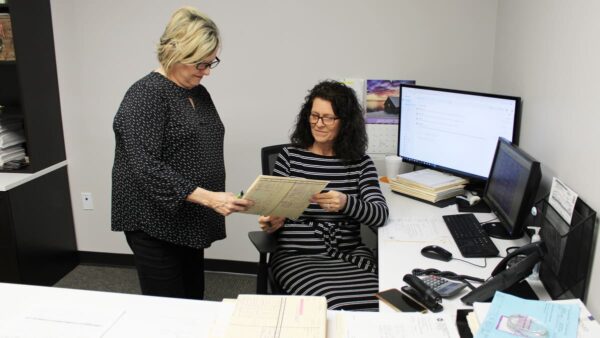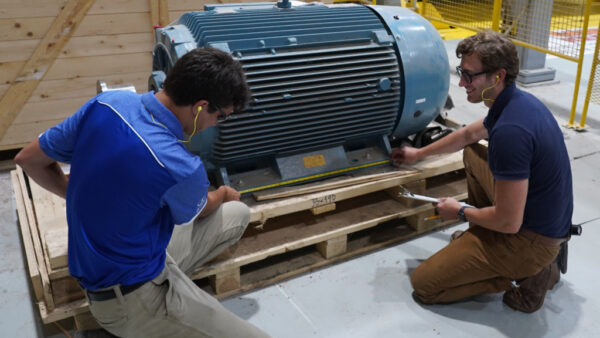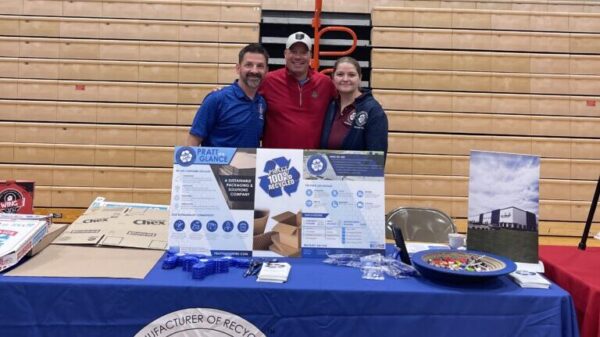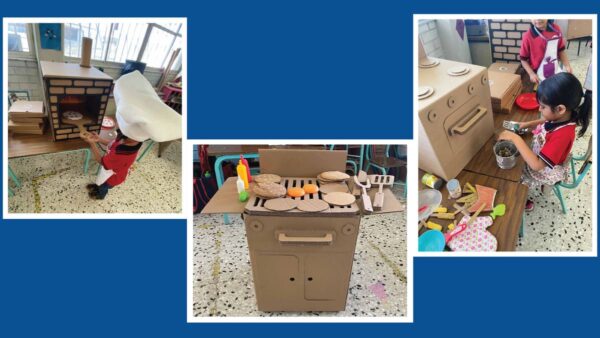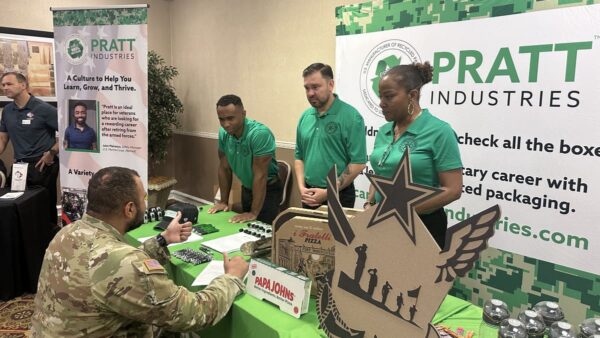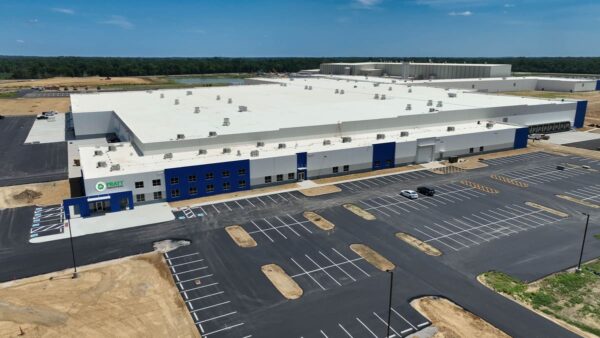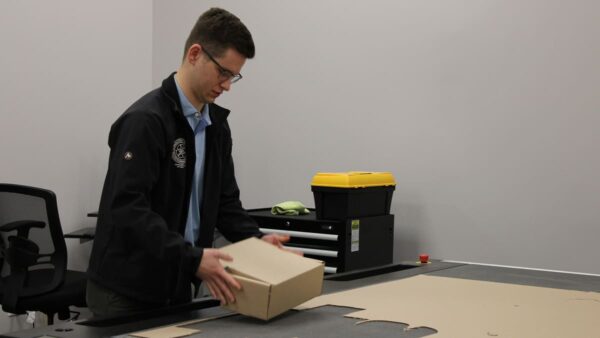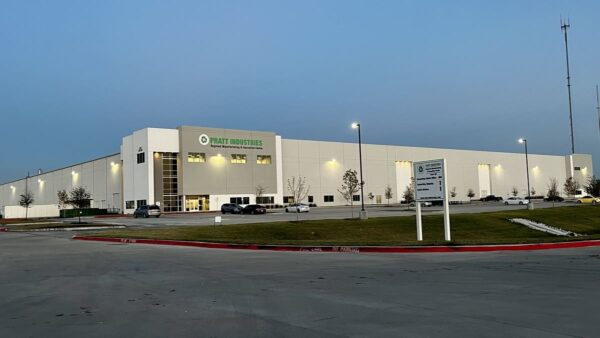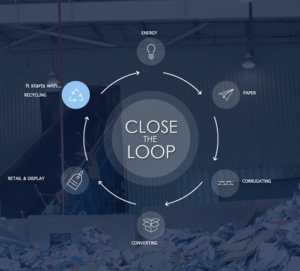LATEST NEWS
LATEST NEWS
- All
- Capabilities
- Growth
- People
- Philanthropy
- Sustainability
Internship Insights: Q&A Edition with the 2024 Pratt Interns
People
At Pratt Industries, we strive to develop the next generation of packaging professionals by giving students the opportunity
Sourcing, Producing & Recycling Paper Across the U.S.
Sustainability
For more than 30 years, Pratt has been sourcing, producing and recycling paper in the U.S.
Staying Cool and Hydrated: A Commitment to Safety
People
At Pratt Industries, safety isn't just a priority-it is a guiding principle embedded in everything we do.
Fighting Food
Insecurity
Philanthropy
Pratt Industries and Executive Global Chairman, Anthony Pratt, have long supported efforts to raise awareness about food insecurity
Women of Pratt Industries Share Why Pratt is a Special Place to Work
People
At Pratt Industries, we employ women in roles throughout our company.
Local Service Puts the Customer First
Capabilities
We know communication is key to customer satisfaction, so Pratt Industries' employs experienced, local customer service teams
Pratt Internships & Co-ops: Applying Classroom Lessons to Real-World Projects
People
Pratt Industries is continually looking to grow and develop our next generation of workers.
From Intern to Hired: Turning Pratt Internships into Full-Time Sales Careers
People
Starting a new career is a time of excitement, change and a bit of uncertainty
From Intern to Hired: Transforming a Design Internship into a Full-Time Career
People
Starting a new career is a time of excitement, change and a bit of uncertainty.
Unboxing the Potential of Future Leaders
People
Inspiring curiosity and fostering a culture of continuous learning and improvement is one of Pratt’s guiding principles.
Promoting Creativity and Learning for Children with Corrugated Packaging
Philanthropy
When we think about corrugated packaging, boxes used for shipping goods are probably what comes to mind for most adults
A Look Back at Our 2023 Community Events
Philanthropy
From collecting food for local food pantries and sponsoring youth athletic teams to mentoring local students
America Recycles Day Happens Every Day at Pratt Recycling
Sustainability
America Recycles Day is annually celebrated in November, but at Pratt Industries, recycling is always top of mind.
Providing Veterans with a Path to Civilian Careers
People
Pratt is proud to employ veterans in a variety of roles throughout our organization
Pratt Industries Opens Sixth 100% Recycled Paper Mill and State-of-the-Art Box Plant
Growth
Pratt Industries, Inc. opened its $700 million 100% recycled paper mill and corrugated box factory
From the Classroom to the Workforce: Inside Pratt’s Internship and Co-op Program
People
Pratt Industries is dedicated to investing in the nation's rising talent
Packaging Design Careers at Pratt Industries
People
Packaging designers at Pratt Industries bring custom packaging solutions for various industries to life.
Anthony Pratt Officially Opened New Regional Manufacturing & Innovation Center in Cedar Hill, TX
Growth
Pratt Industries' Executive Chairman Anthony Pratt, spoke at the opening of the new Regional Manufacturing and Innovation Center in Cedar Hill, TX.
Pratt Industries Opens New Regional Facility in Cedar Hill, Texas
Growth
Pratt Industries opened its new $253 million advanced manufacturing box factory in Cedar Hill, Texas.
Putting Safety First: Lithium-Ion Battery Use and Disposal Tips
Sustainability
Putting safety first is a guiding principle for Pratt Industries. We emphasize and train employees on safe workplace practices
Pratt Invests in High Graphics and Advanced Print Technologies
Capabilities
To meet the growing demand for faster speed to market and a more agile supply chain, Pratt Industries has committed to strategic growth initiatives
Industry-Leading Digital Print Technology
Growth
In a world where customers want things faster, simpler, eco-friendly and with greater value, we have the solution
Where Sustainability is Always Part of the Package
Sustainability
Anthony Pratt spoke about his "green mission" to use recycling as "an important weapon"
Celebrating the Women of Pratt Industries
People
March is Women's History Month, commemorating and encouraging the study, observance and celebration of the vital role of women
Pizza Packaging Made Easy (and Sustainable)
Capabilities
Approximately three billion pizza boxes are manufactured in the U.S. each year
New Year, New You: Pratt Promotes Healthy Lifestyles
People
Many people take the opportunity at the beginning of a new year to refocus on what they find most important
Pratt Industries’ Hometown Heroes
People
Throughout the year, individuals and teams across Pratt Industries devote their time & energy to giving back to their local communities.
Pratt Industries Commits to Investing $5 Billion in Recycling, Clean Energy Infrastructure and Manufacturing Jobs in the USA over the Next 10 Years
Growth
Pratt Industries executive chairman, Anthony Pratt, has pledged to invest $5 billion in U.S. recycling and clean energy infrastructure to […]
Tips for Finding Your Post Military Professional Path
People
Each year, approximately 250,000 service members transition from the military to civilian life.
At Pratt, Every Day is America Recycles Day
Sustainability
At Pratt, every day is a day we support, promote and actively participate in recycling. Here, recycling means more than […]
Beyond the Box Solutions: Pratt Partners with Customers to Reduce Costs and Improve Efficiencies
Capabilities
At Pratt Industries, we take a holistic approach with our customers to look beyond basic packaging needs to develop vertically […]
Meals with Meaning Program Surpasses Original Donation Goal and will Continue to Serve the Atlanta Community through 2023
Philanthropy
HelloFresh, the world’s leading meal kit company, Pratt Industries, America’s 5th largest corrugated packaging company, and food rescue organization Second […]
Pratt Industries Continues to Take Action to Fight Hunger
Philanthropy
Food insecurity is a threat to many. According to the USDA, more than 38 million people, including 12 million children, […]
Pratt Industries To Begin Hiring For New Regional Manufacturing & Innovation Center In Cedar Hill, TX
Growth
In April, the Cedar Hill City Council approved an agreement with Pratt Industries, Inc. (through its wholly-owned subsidiary, Pratt Corrugated […]
Pratt Logistics: Optimized Supply Chain, Exceptional Customer Service & Reliable Partner
Capabilities
Pratt Logistics, LLC is an integral part of Pratt’s vertically integrated supply chain. Utilizing a tenured team, modern truck fleet […]
Workplace Safety, Top Priority & Shared Commitment
People
Workplace safety is a top priority and shared value at Pratt Industries. Our network of plants across the country takes […]
Employee Well-Being is a Key Component to Pratt Industries’ Work Culture
People
One of Pratt Industries’ guiding principles is to hire the best people and provide an environment where they can thrive […]
Harvesting the Urban Forest
Sustainability
Anthony Pratt, Executive Global Chairman of Pratt Industries and Visy, often refers to Pratt’s material recovery programs and circular strategy […]
Women of Manufacturing and Pratt Industries
People
According to Deloitte, manufacturing has traditionally been a male dominated industry with women making up approximately one third of the […]
Pratt’s Recent Philanthropic Efforts Include the Ali Center, Meals with Meaning and Kentucky Tornado Relief
Philanthropy
In alignment with our culture and core values, Pratt Industries is proud to support our communities and the volunteer interests […]
Developing and Investing in the Next Generation of Packaging Professionals
People
While producing innovative, sustainable packaging solutions is core to our business, so too, is building a pipeline of highly trained […]
Operational Benefits of Pratt’s Integrated Supply Chain
Capabilities
Pratt Industries signature Close-the-Loop process gives old products new life through our fully integrated supply chain. Pratt operates an extensive […]
WHAT'S YOUR GOAL?
The best part of Pratt? We go way beyond the box.
Save time by easily plugging into Pratt's Customer Team -- we are over 300 strong!
- Answer six questions.
- You'll be contacted by an account rep who thinks beyond the packaging needs, to be sure you'll get exactly what you want.
WHAT'S YOUR
GOAL?
The best part of Pratt? We go way beyond the box.
Save time by easily plugging into Pratt's Customer Team -- we are over 300 strong!
- Answer six questions.
- You'll be contacted by an account rep who thinks beyond the packaging needs, to be sure you'll get exactly what you want.

